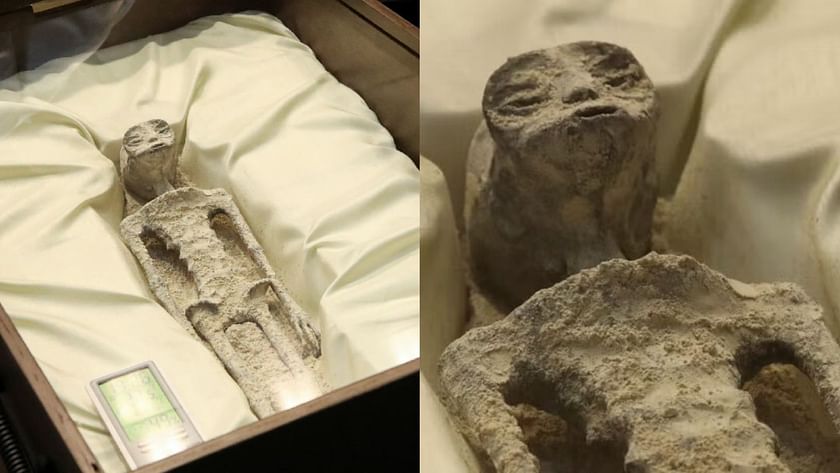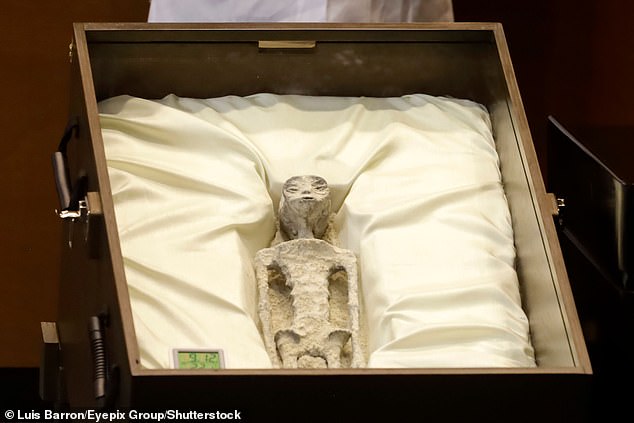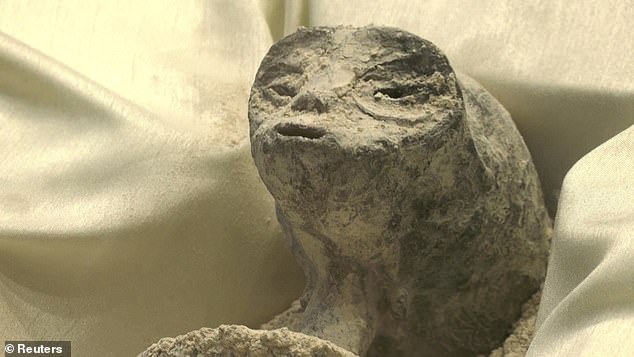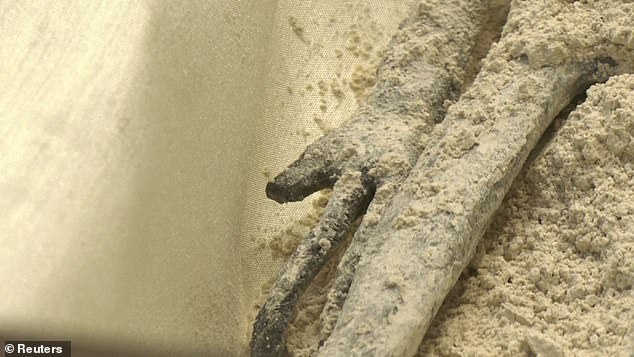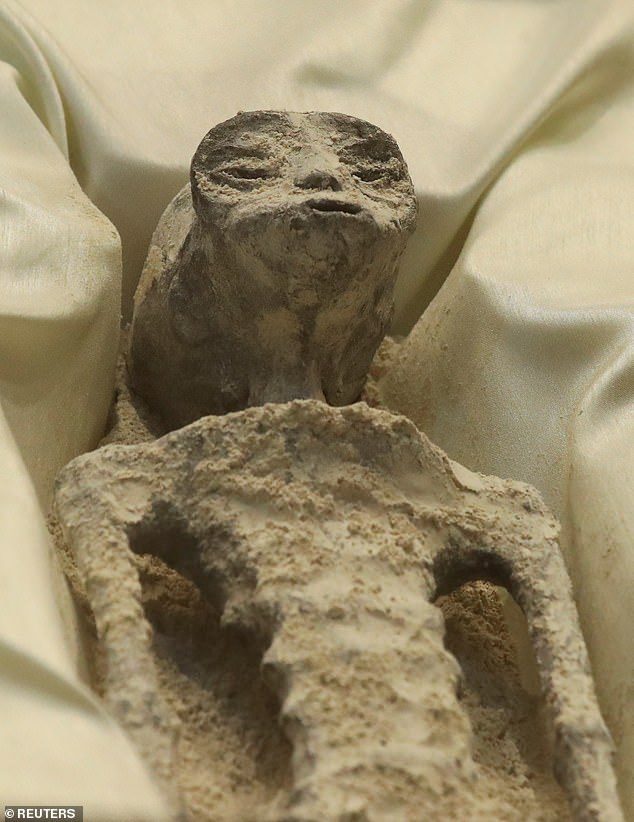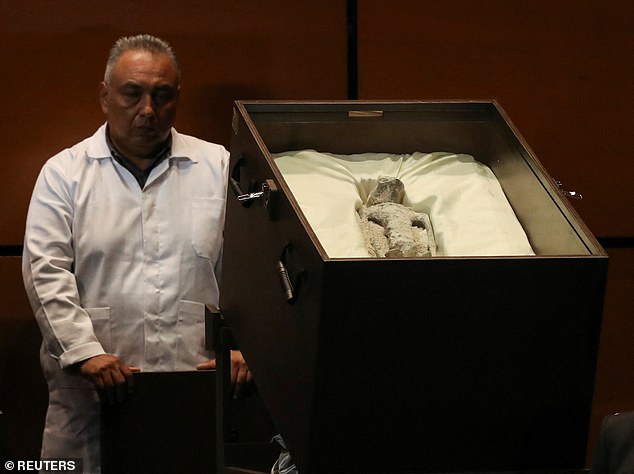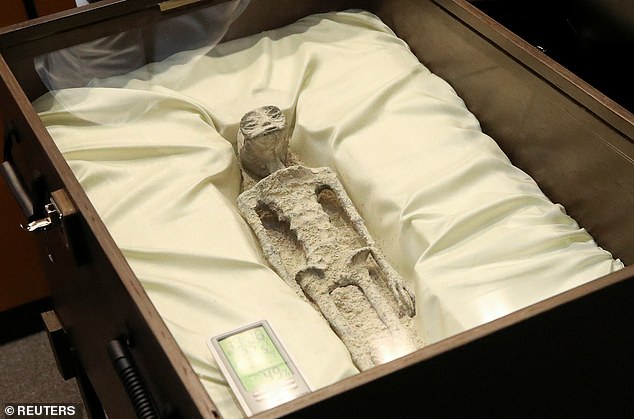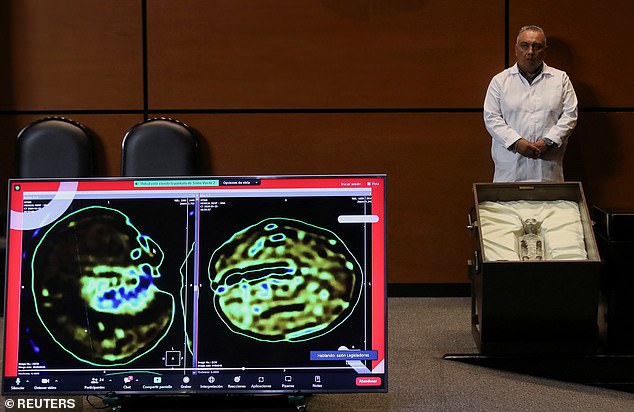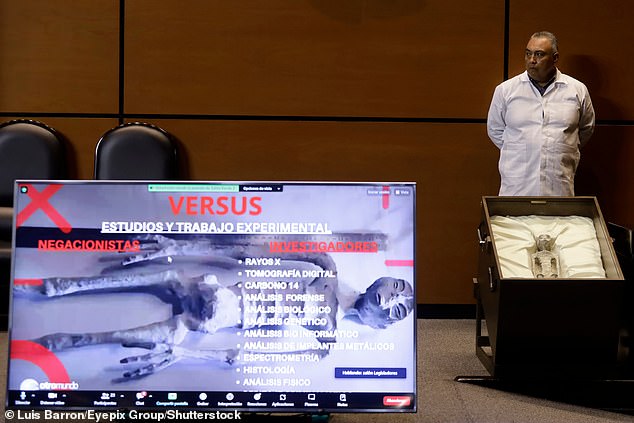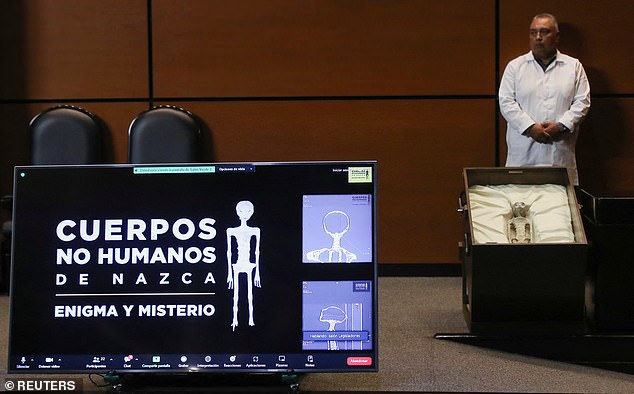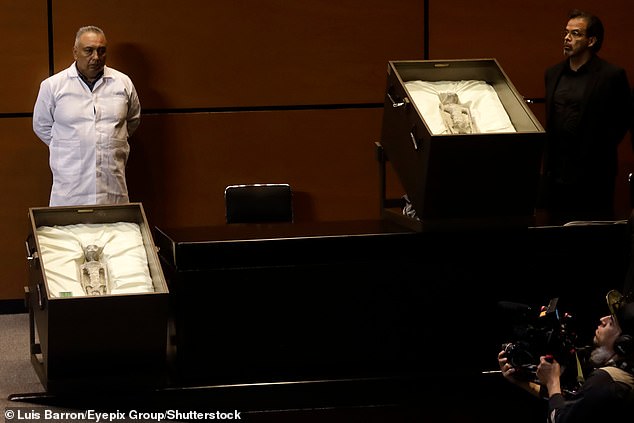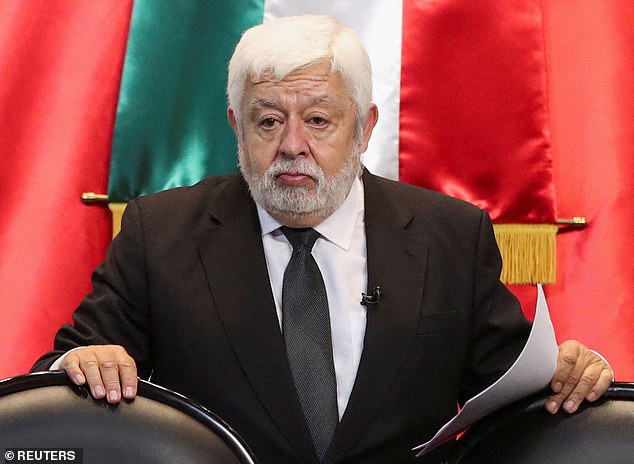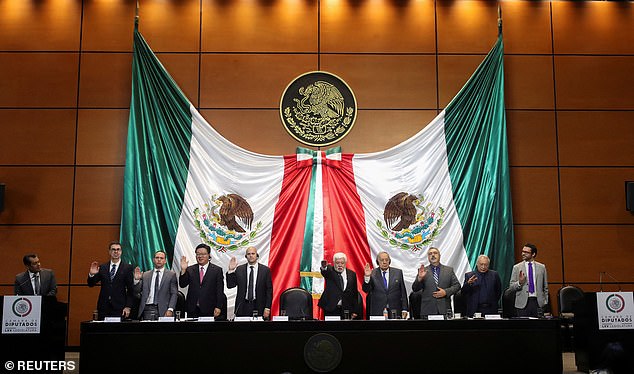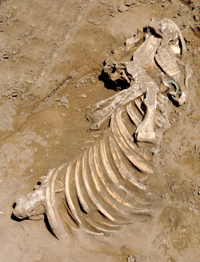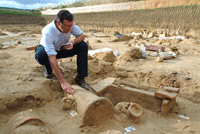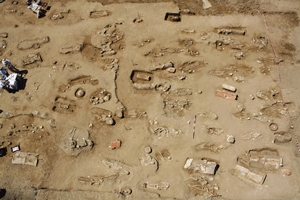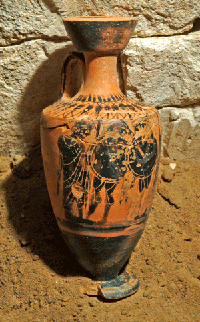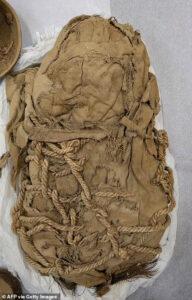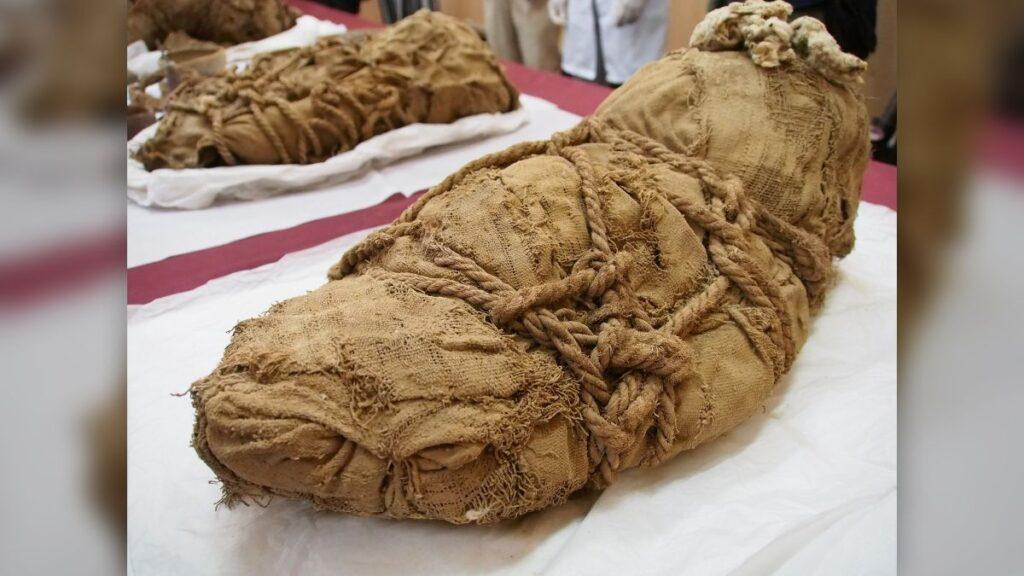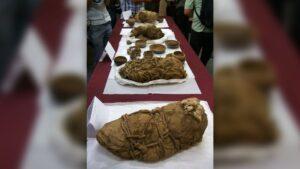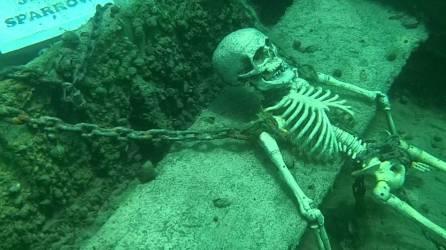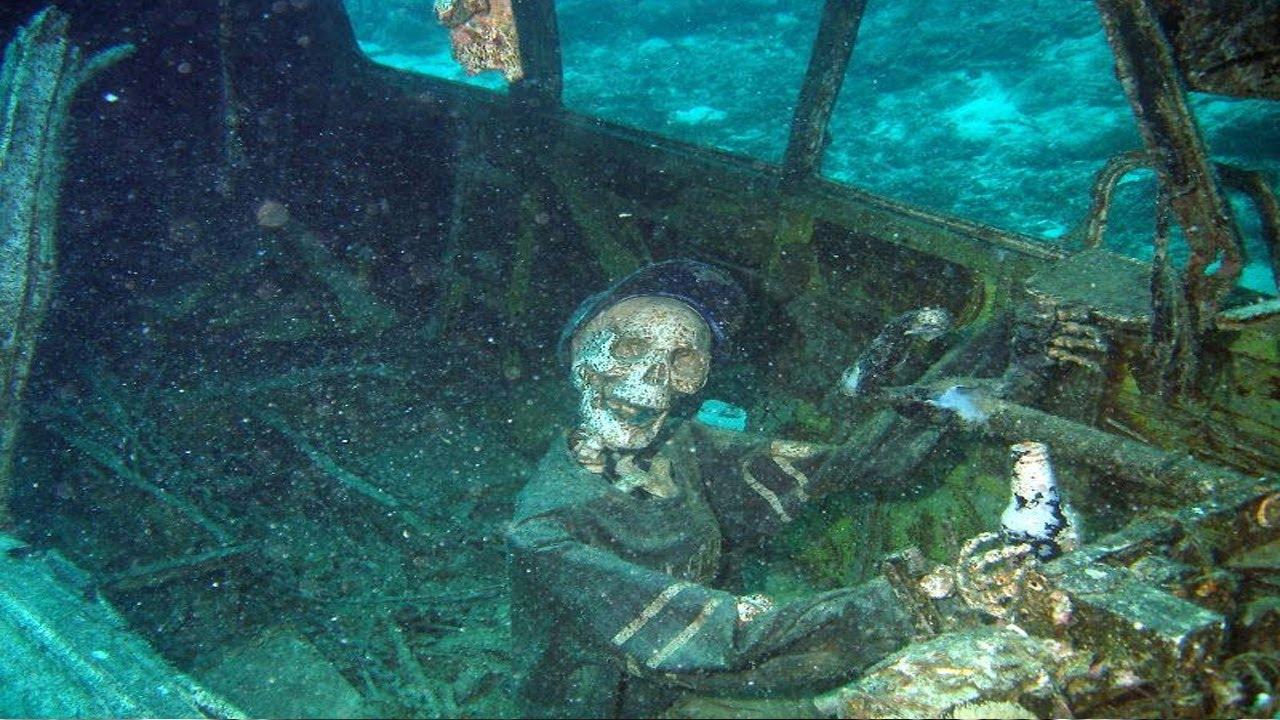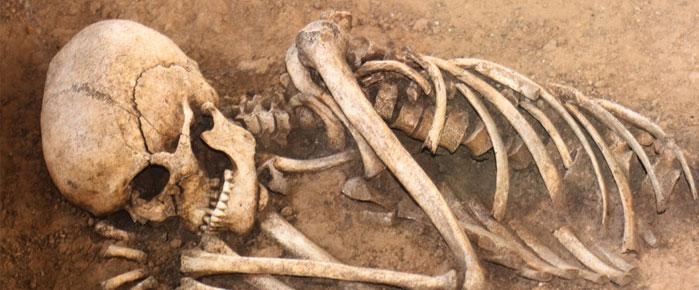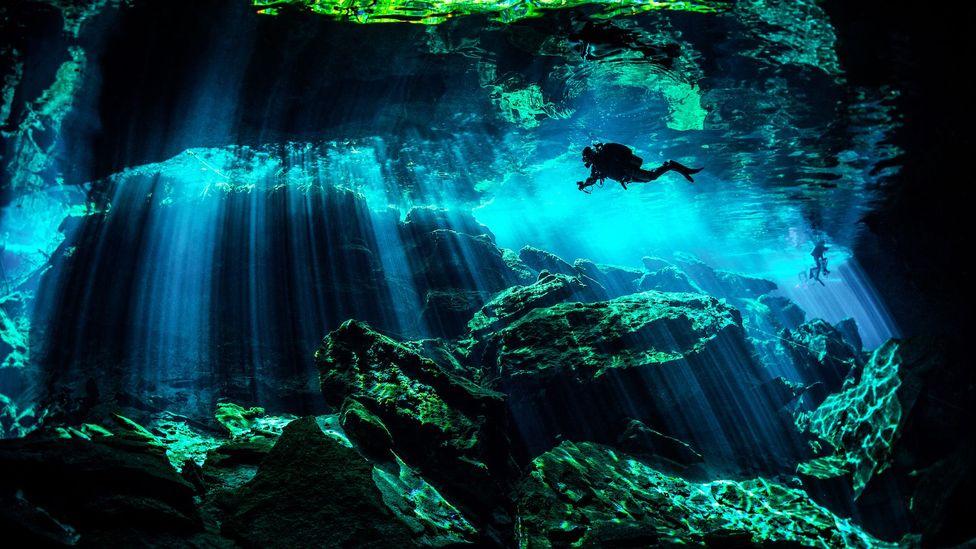From the cliffside path that leads down to the sea, about four kilometers away, I come to a halt. This is the spot: a cave, its entrance barely visible. I look up at the looming face of the rock.
I sense it staring back at me, beckoning with its stash: hundreds of caves, built over the centuries from the lava flows of Mount Teide. Any one of them could be the cave we’re looking for—here, history has not yet been written.
Within this gorge in southern Tenerife, the largest of Spain’s Canary Islands, a stunning cave was found in 1764 by Spanish regent and infantry captain Luis Román. A contemporary local priest and writer described the find in a book on the history of the islands: “A wonderful pantheon has just been discovered,” José Viera y Clavijo wrote. “So full of mummies that no less than a thousand were counted.” And thus the tale of the thousand mummies was born. (Read about the different types of mummies found worldwide.)
Few things are more exciting than navigating the ambiguous edge between history and legend. Now, two and a half centuries later, in the gorge known as Barranco de Herques—also called “ravine of the dead” for its funerary caves—we find ourselves in the place that most local archaeologists consider to be the mythical “cave of the thousand mummies.” There are no written coordinates; its location has been passed on by word of mouth among a chosen few. The hikers who venture along the path are oblivious to its existence.

The archipelago’s volcanic underpinnings created a system of lava tubes on Tenerife—an ideal environment for entombment. PHOTOGRAPH BY ROBERT HARDING, NAT GEO IMAGE COLLECTION
In the company of islander friends, I feel privileged to be shown the place where they believe their ancestors once rested. I crouch toward the narrow opening, turn on my headlamp and drop to the ground. To find this hidden realm, we crawl in on our stomachs for a few claustrophobic meters. But there’s a reward for subjecting ourselves to the tight squeeze: a tall, spacious chamber suddenly opens before me, holding the promise of a journey to the island’s past.
“As archaeologists we assume that the expression ‘thousand mummies’ was probably an exaggeration, a way to suggest that there were indeed a lot, a whole lot—hundreds,” says Mila Álvarez Sosa, a local historian and Egyptologist. In the darkness, our eyes slowly adjust. We survey the space for the telltale signs of a necropolis in the meandering lava tube, part of an extensive system across the island.
These weren’t the first mummies to be unearthed on the island. But according to local lore, a large sepulchral cave like this one held the pantheon of the nine Mencey kings who ruled the islands in precolonial times.
The cave’s location was a scrupulously guarded secret. And there was no record of it, which only served to elevate it as the holy grail of Canarian archaeology. Locals maintain they don’t disclose the location in order to protect the memory of their ancestors who rested there, the Guanches, the Indigenous people of this island—no distinct Guanche population remains today. Others say it was lost to a landslide, buried forever. (Go beyond the beaches in the Canary Islands.)
What may have been a certainty for those 18th century explorers morphed into legend when the mummies were plucked from their resting place and their location was lost. But the precious few—from that cave and others—that remain intact and are held in museum collections are helping scientists unravel the story about the archipelago: when and where the first inhabitants came from, and how they honored their dead.
Preserving the deceased for eternity
Tenerife was the last island in the archipelago to fall to the Castilian crown, beginning in 1494. It wasn’t the first confrontation the islanders had with Europeans, but it would be the last. Álvarez Sosa imagines the stark contrast when at the end of the 15th century, the dawn of the Renaissance, soldiers sailed in on ships and wielded swords on horseback. They came face to face with a people just emerging from the Neolithic era, cave dwellers who wore animal skins and used tools made of sticks and stones. “But yet they honored their dead, preparing them for their last trip,” Álvarez Sosa says. “They preserved them.”
A fascination with death led the colonists to chronicle the funerary ritual in detail. “That’s what mainly caught the attention of the Castilian conquerors,” says Álvarez Sosa. In particular, they were intrigued by the embalming process—mirlado—that prepared the xaxos, as the Guanche mummies were called, for eternity.
The cave walls are silent. Submerged in the darkness, I imagine the awe Luis Román must have felt when, imbued with the spirit of the Enlightenment and accompanied by locals, he entered the necropolis on a mission to retrieve a few specimens for study. He transported the bodies to Europe where, by the 18th century, mummies represented a scientific curiosity as well as a novelty; both scholars and collectors took an interest.
I picture the moment Román raised his torch, revealing hundreds of bodies frozen in time. He must have been overcome by a mixture of sacrilege and exhilaration. Curiously the writer who summarized a report of their visit omitted the location. If the intention was to preserve the cave from plunder, he regrettably failed: by 1833 multiple sources confirmed no bodies remained. (Learn more about Egypt’s royal mummies.)
I stand up and shake the white dust from my hands and knees. My headlamp dimly illuminates the walls. Though I know there’s not even a remote possibility, in my heart I still long to spot a xaxo (pronounced haho) in some nook or cranny, just like Viera y Clavo described.
The method for preserving these corpses for their battle against time and nature was surprisingly simple. “It’s the same process you would use with food,” says Álvarez Sosa. “The bodies were treated with dry herbs and lard and were left to dry in the sun and smoked by fire.” It took 15 days to prepare a xaxo, compared with 70 for an Egyptian mummy (40 days to dehydrate in naturally occurring natron salt, then 30 days of embalming in oils and spices before the cavity of the corpse was filled with straw or cloth and wrapped in linen). Another key difference: according to chronicles, for propriety women in the Canary Islands participated in the process, handling female corpses.

Geneticist Rosa Fregel removes a mummy tooth for DNA testing, to trace the origins of these early islanders. PHOTOGRAPH COURTESY OF THE GOLDEN MUMMY, STORY PRODUCTIONS
Later, the family of the deceased handled the xaxo, placing it in a cured and carefully stitched bag made of animal hide—usually goat. The number of hide layers corresponded to the person’s social standing. The practice wasn’t limited to Tenerife. Mummies have also been found on neighboring Gran Canaria island, decorated with etchings or painted in multiple hues, wrapped in a reed mat, and then deposited in hollow tree trunks. Corpses also have been found there in funerary caves.
“We still have many questions—and few samples to study,” says archaeologist María García, curator at the Institute of Bioanthropology in Santa Cruz de Tenerife. She’s painstakingly catalogued the history, dates, and origin of the remains of the 30 or so xaxos in the institute’s drawers. In this immaculate morgue, the bodies of men, women, and children slumber in repose, just steps from one of the city’s thriving thoroughfares, Noria Street. These xaxo remnants were found by hikers and shepherds across sites in Tenerife. So the question lingers: What happened to the ‘thousand mummies’? Or was it all a fabrication?
“It was systematic plunder,” María García says bluntly. “During the 17th and 18th centuries the mummies were a lure for the European cultured classes. Our xaxos traveled around the world to be placed in museums and private collections, and some were even ground into aphrodisiac powders.”
Others might have ended up at the bottom of the sea, Álvarez Sosa posits in her book Tierras de Momias (Lands of Mummies), probably thrown overboard when balmy conditions on the ship activated the decomposition process during the trip to the Continent. (What surprising new clues are revealing about ancient bog mummies.)
Despite having the intact Guanche mummy and remains of three dozen more, we know very little about their tombs. “No archaeologist has ever found a xaxo in its original environment,” María García explains.

A CT scan performed in 2016 on the same mummy—the best example of the 40 in museum collections—in a Madrid hospital allowed researchers to peer into its interior without damaging its structure.PHOTOGRAPH BY RAÚL TEJEDOR, RTVE / STORY PRODUCTIONS
Seeking answers
This is not the first time I traveled to the Canaries seeking answers. Eight years ago I rappelled down a cliff face in the gorge, peering into a dozen caves in search of the legend. I reread 15th- and 16th-century chronicles and interviewed experts to unravel the origins of the early Canarians.
These were the mythical Fortunate Isles where ancient Mediterranean seafarers had once landed. The Europeans who later encountered the islands in the Middle Ages found that unlike other Atlantic archipelagos, these islands were inhabited, their populations seemingly isolated for centuries.
Chronicles spoke of tall Caucasians, which sowed the seeds for now refuted hypotheses: they alternately descended from shipwrecked Basque, Iberian, Celtic, or Viking sailors. I left the island without coming much closer to any answers. But now modern technology has put an end to the enigma that lasted for centuries. The mummies have spoken.


“It looked like a wooden sculpture of Christ,” said radiologist Javier Carrascoso of the 900-year-old Guanche xaxo whose hands and feet were carefully bound. PHOTOGRAPHS BY FERNANDO VELASCO MORA COURTESY OF THE NATIONAL ARCHAEOLOGICAL MUSEUM, MADRID
If the place I’m now exploring is the cave described by Viera y Clavijo, this is where the mummy at the top began its long voyage. The circuitous tale begins in 1764, when it was shipped to Madrid as a gift to King Charles III for the court to take in the workmanship of the Guanches in sending their dead to eternity. In 1878 it was on exhibit at the Paris World’s Fair, before it was returned to Madrid, where it lay for over a century in what is today the National Museum of Anthropology. In 2015 it came to its current resting place, the city’s National Archaeology Museum. One night in June 2016 under tight security the mummy was taken on its shortest outing ever: to a nearby hospital for a CT scan.
“We had already had CT scans of several Egyptian mummies,” says Javier Carrascoso, associate chief of radiology at Madrid’s QuirónSalud University Hospital, which offered to extend the technology to the Guanche mummy. The scan provided data that debunked a hypothesis that they had simply dehydrated naturally as well as the theory that the Guanche mummification process was derived from Egypt, some 3,000 miles away. (Learn how mummies show clues to ancient diseases.)
“It was impressive,” says Carrascoso. “The Guanche mummy was much better preserved than the Egyptian [ones].” The definition of its muscles could still be observed, and the hands and feet in particular were outlined in detailed relief. “It looked like a wooden sculpture of Christ,” he says.
But the most remarkable finding was hidden: unlike its Egyptian counterpart, the Guanche mummy had not been eviscerated. Its organs, including the brain, were perfectly intact thanks to a mixture—minerals, aromatic herbs, bark of pine and heather, and resin from its native dragon tree—that halted bacteria and thus decay, inside and out. Radiocarbon dating in 2016 revealed a tall, healthy male, perhaps a member of the elite, given the condition of his hands, feet, and teeth.






